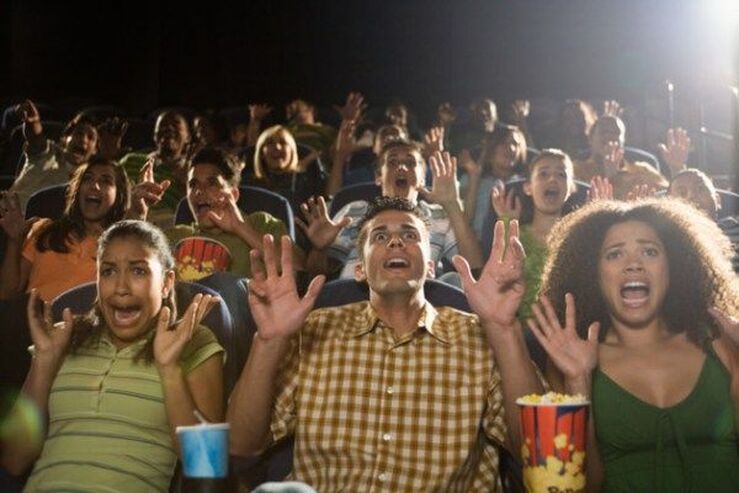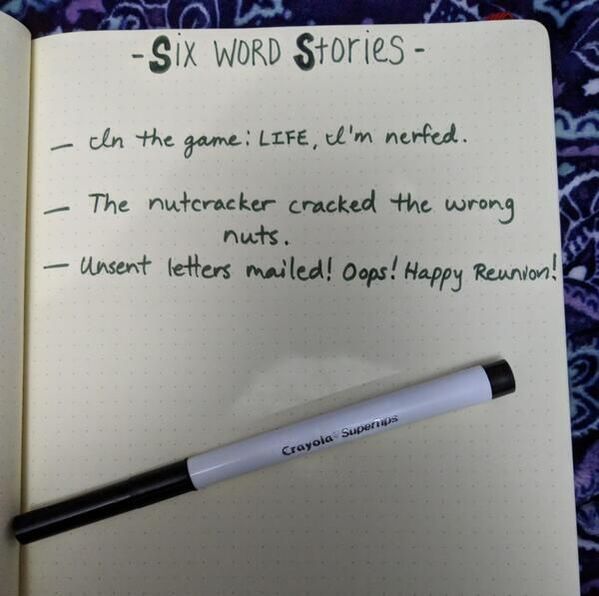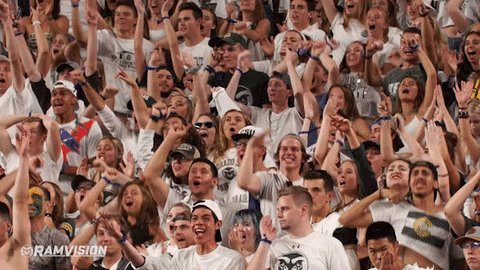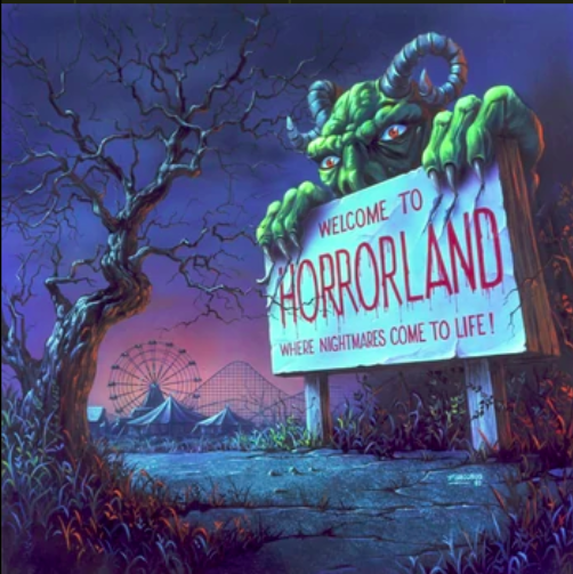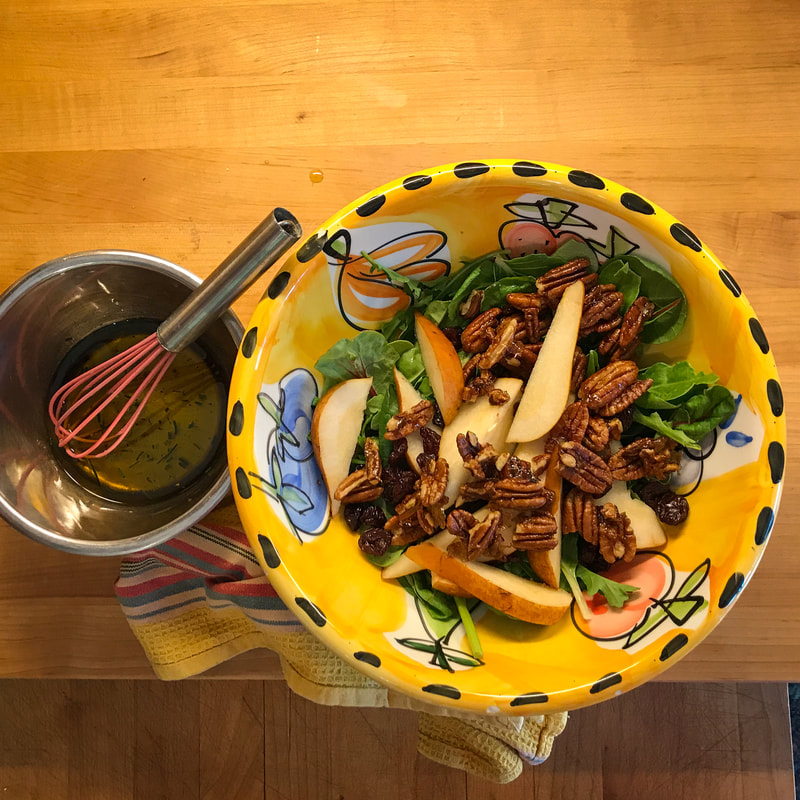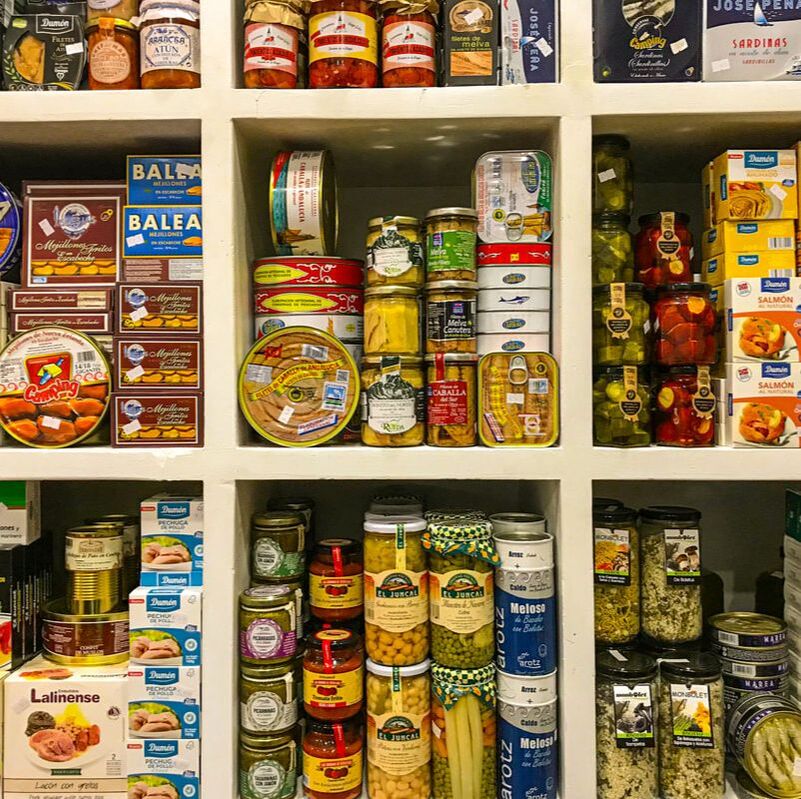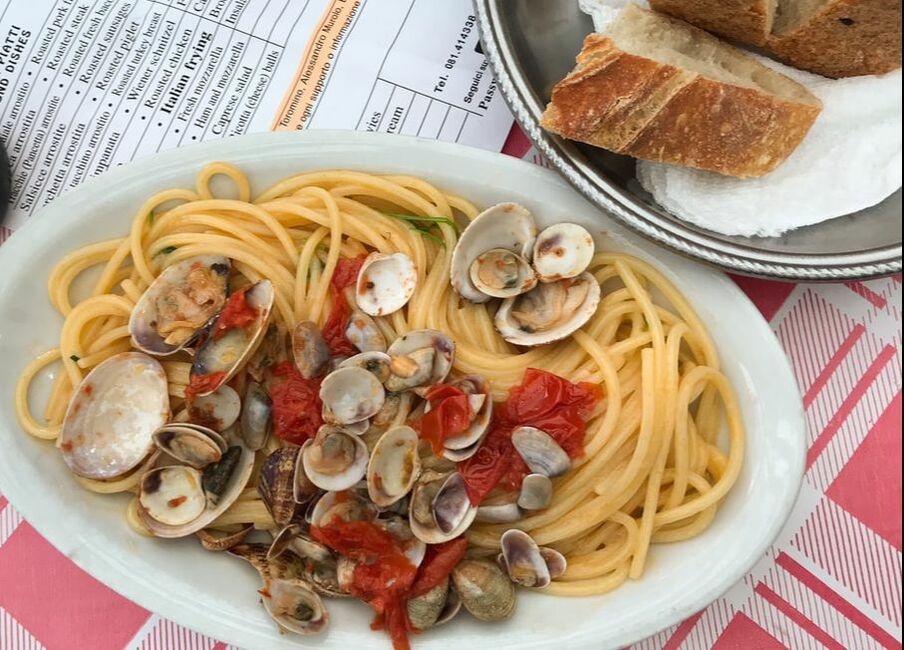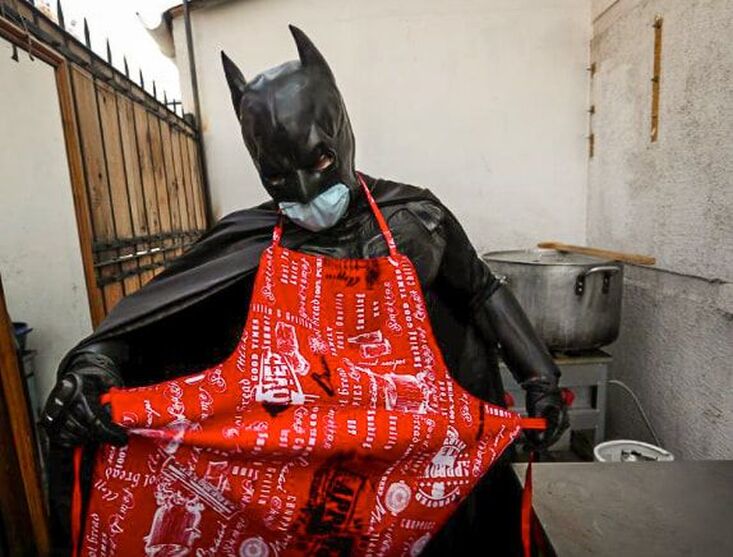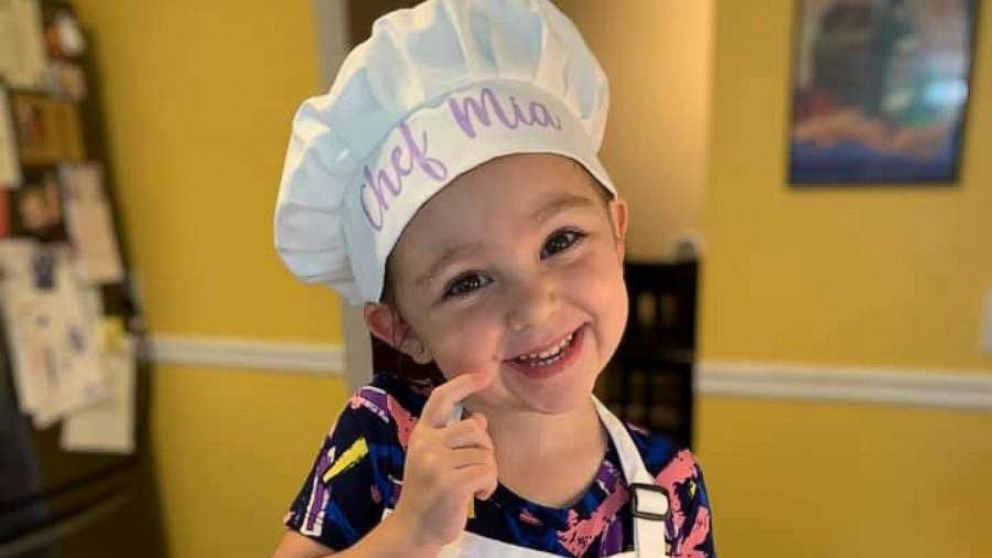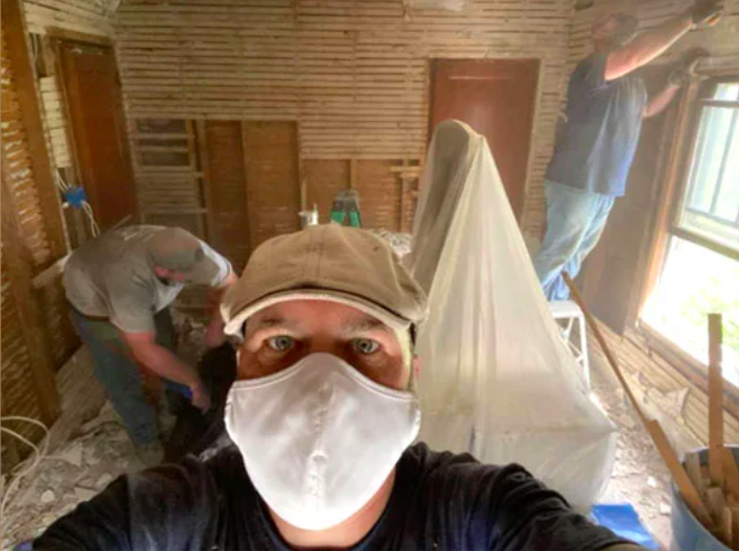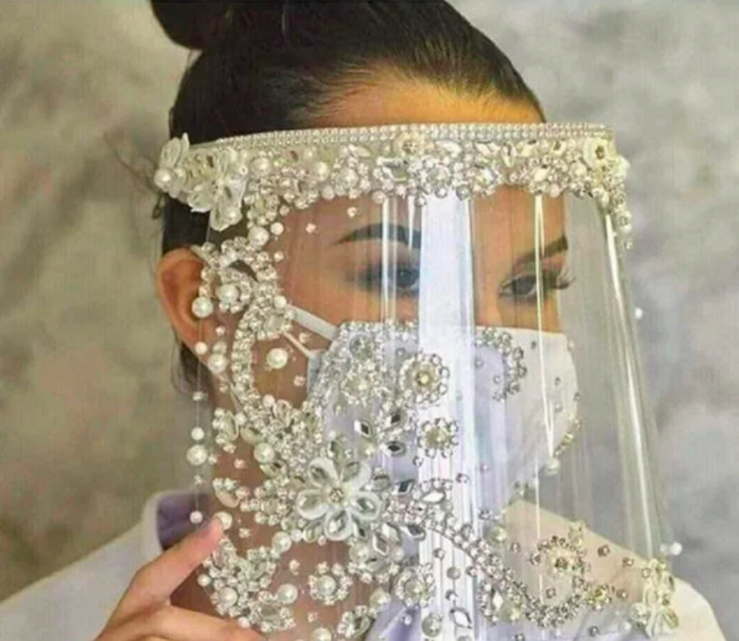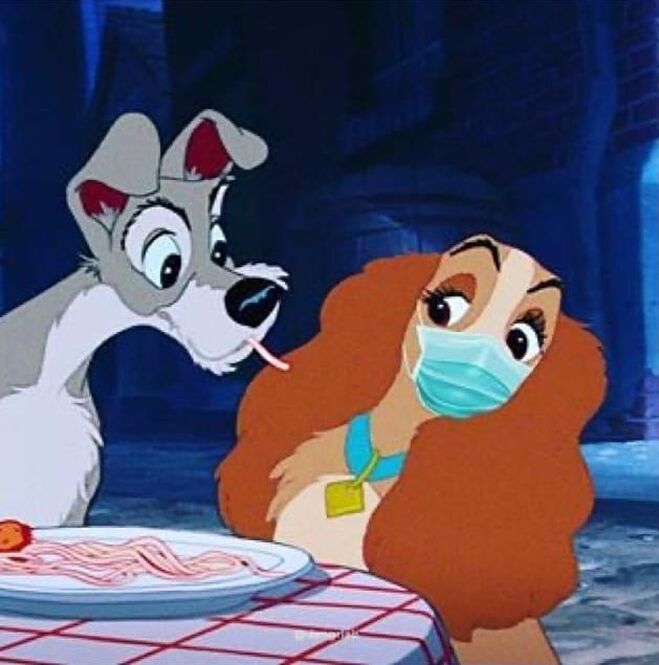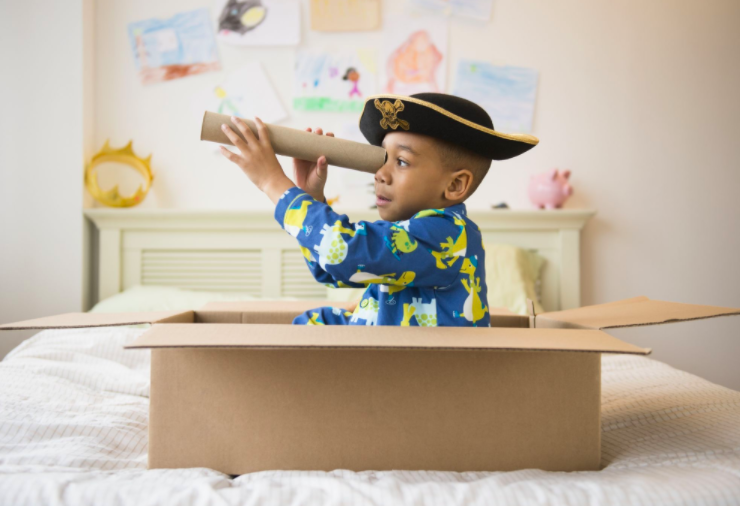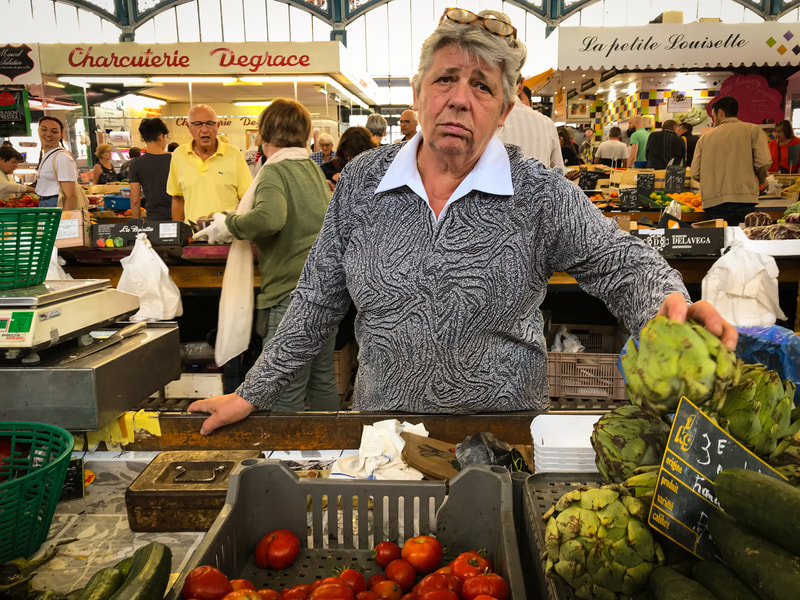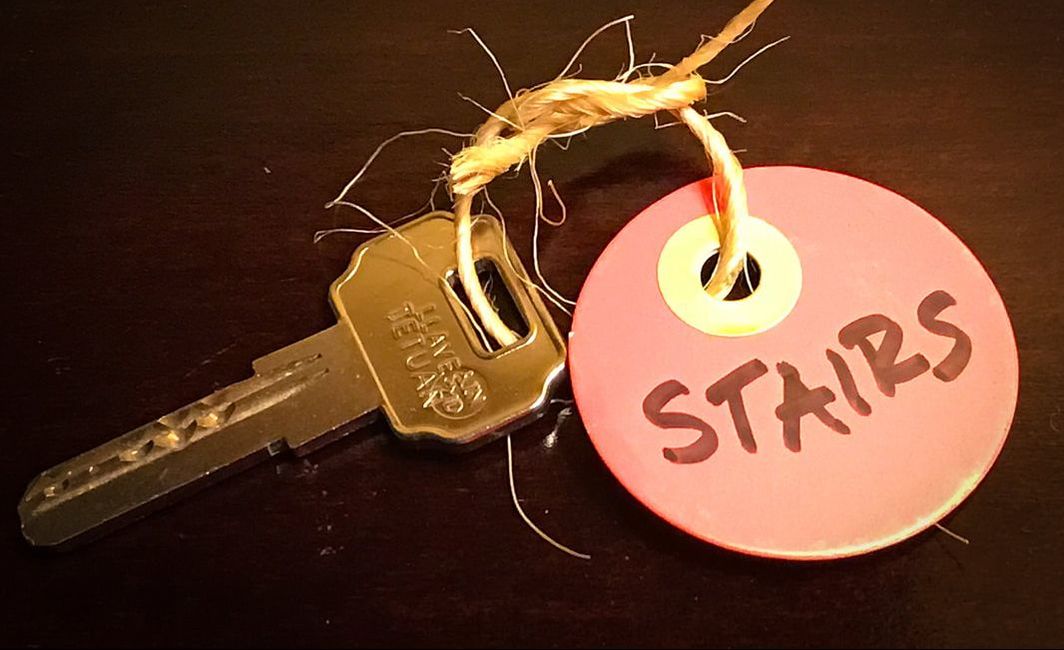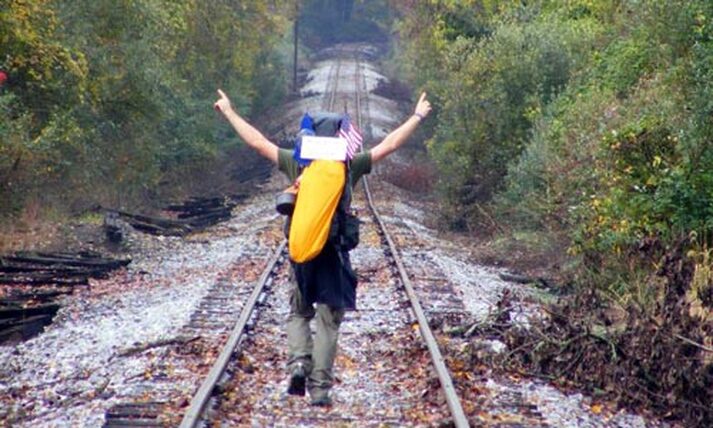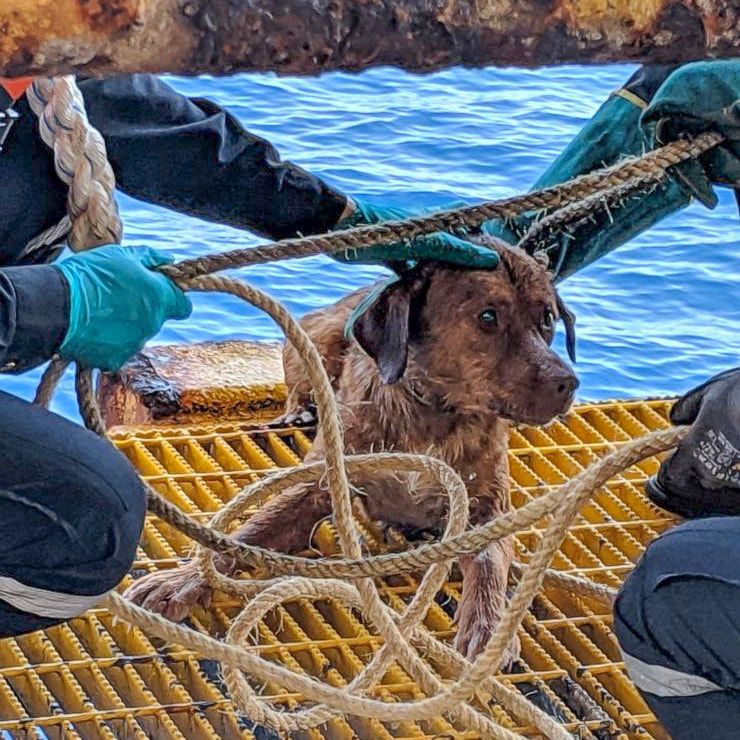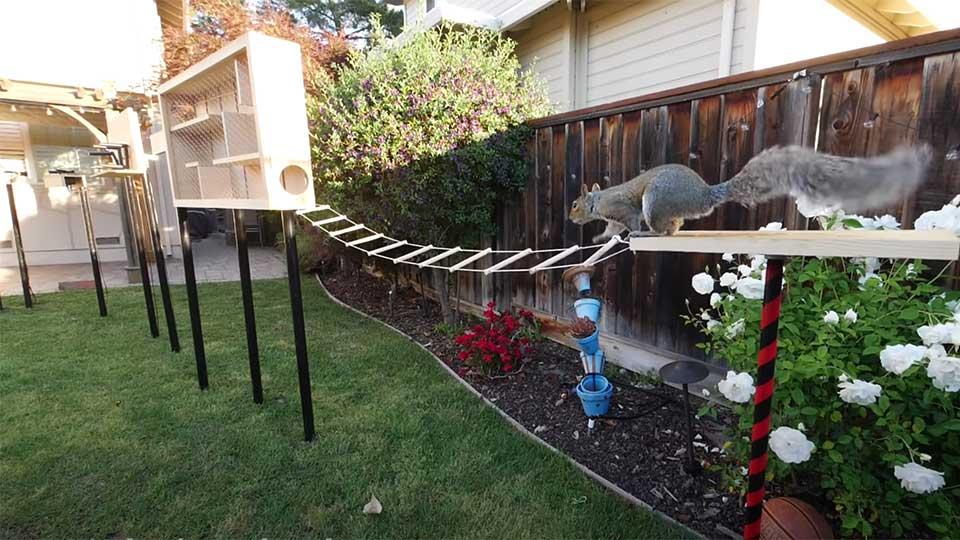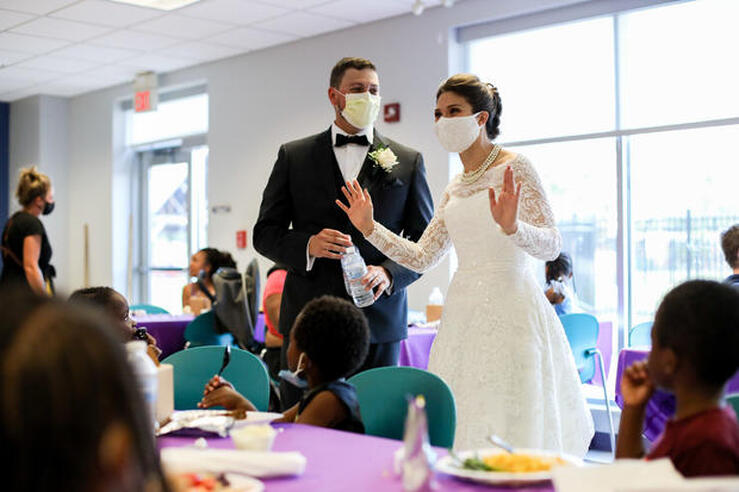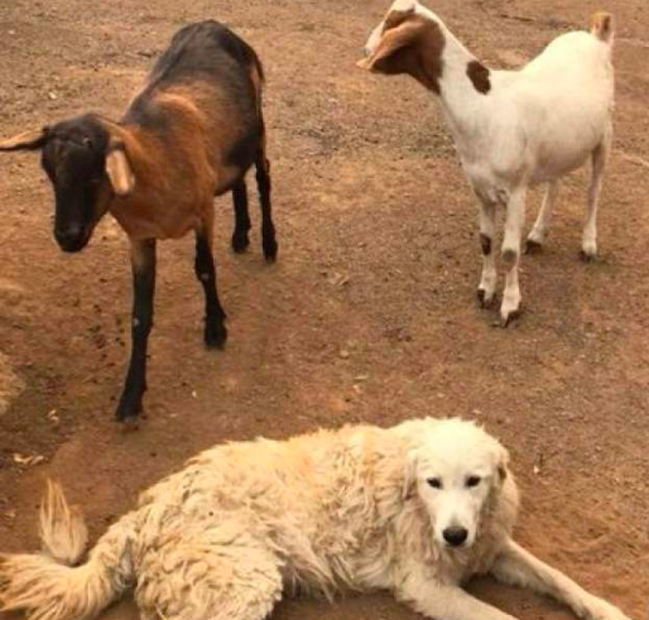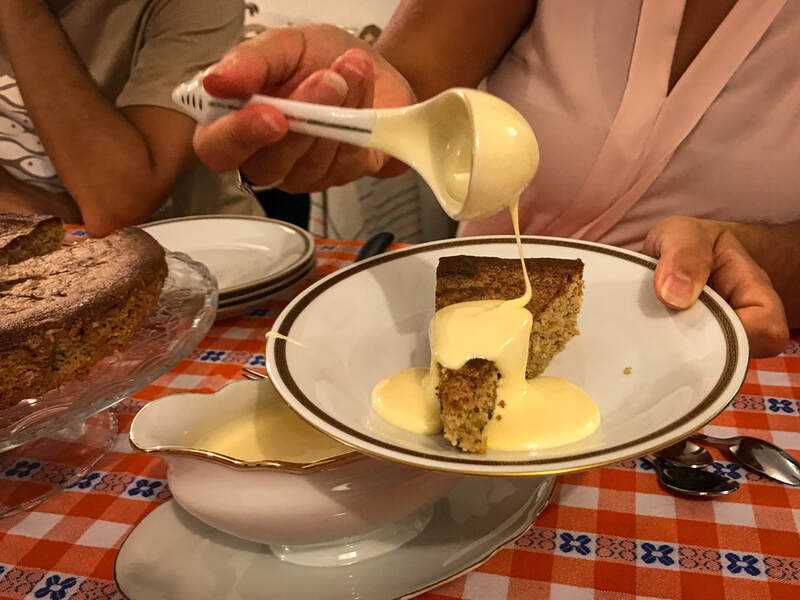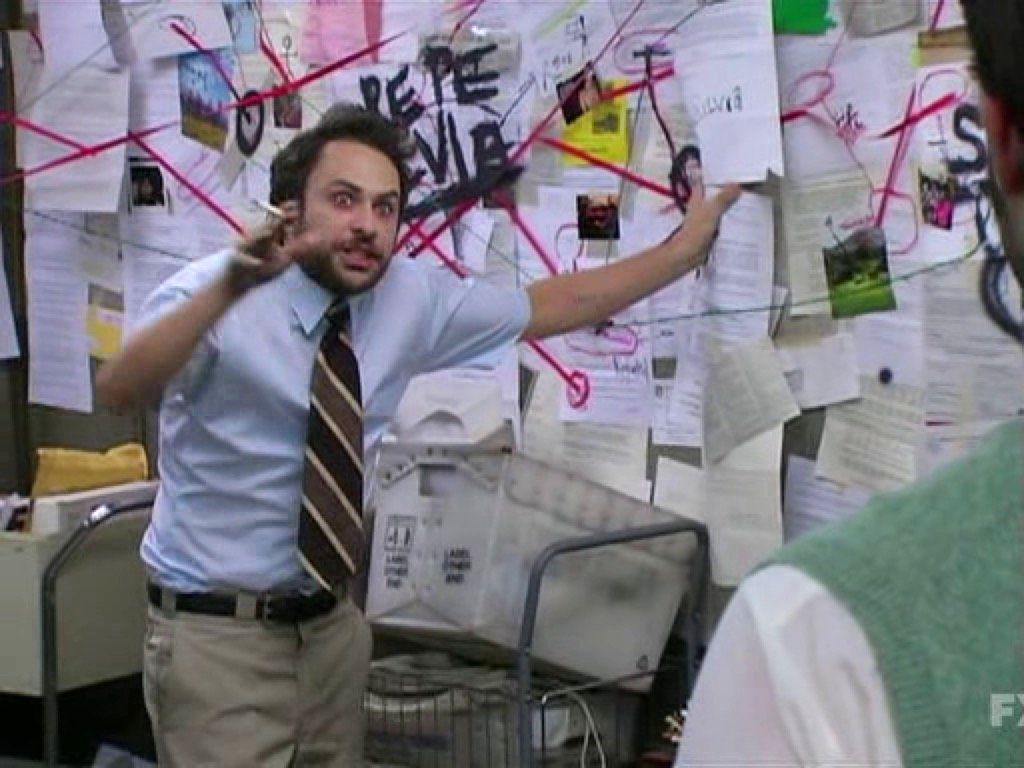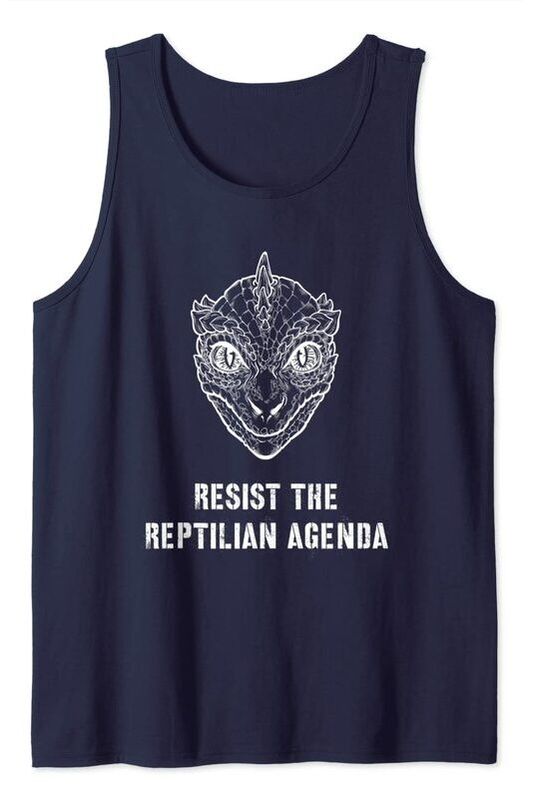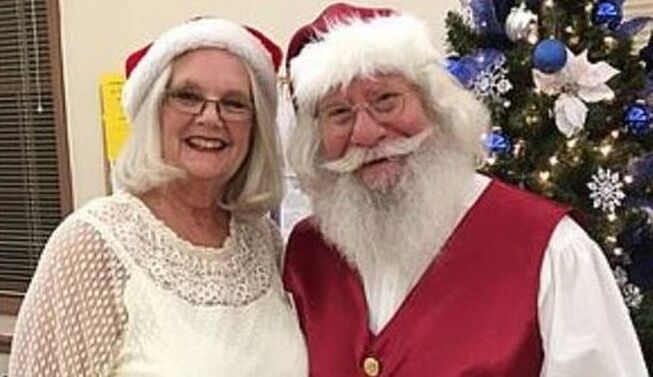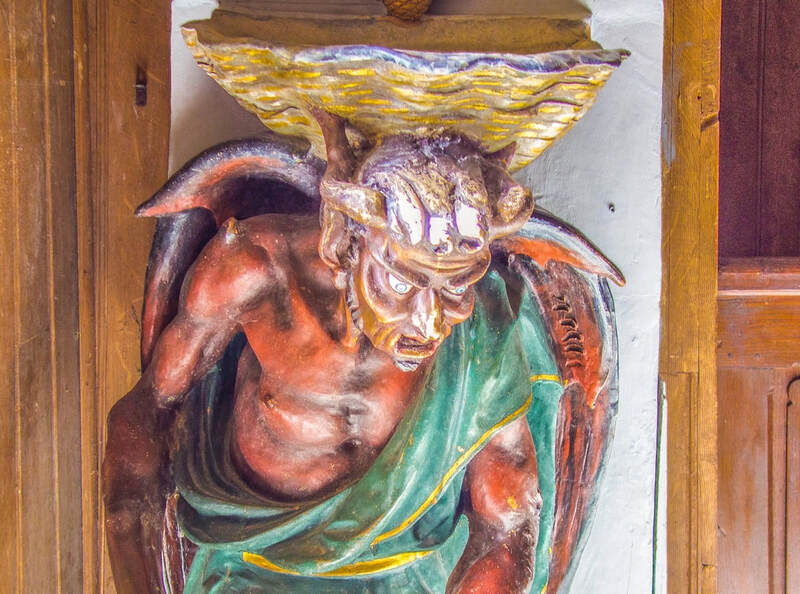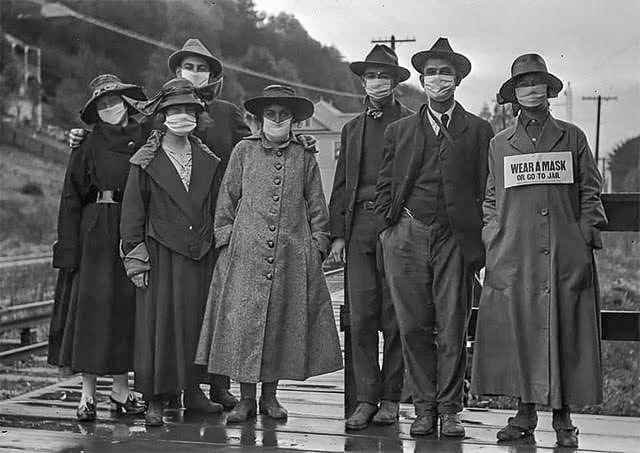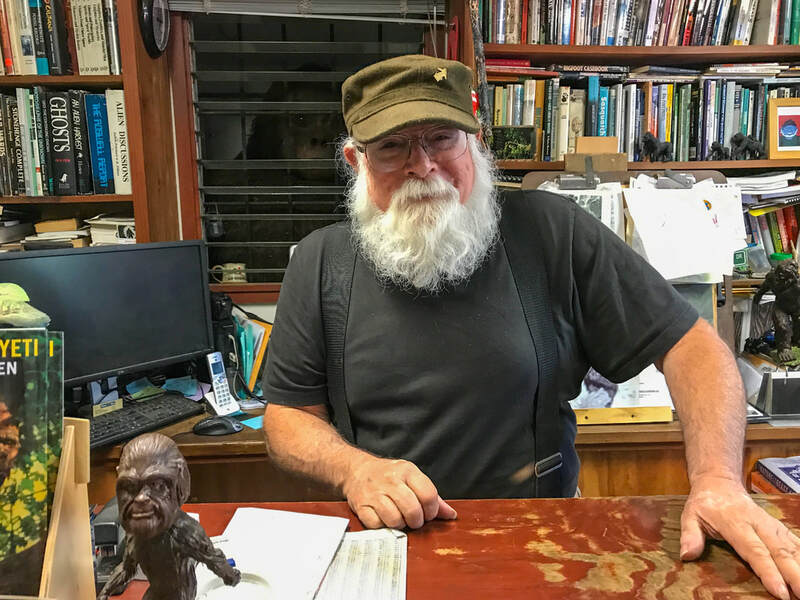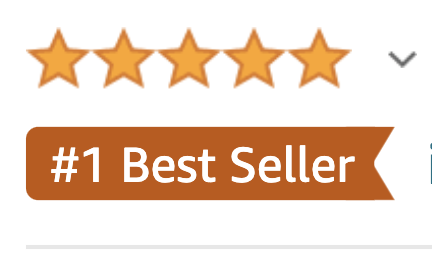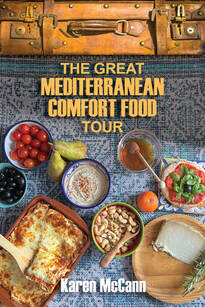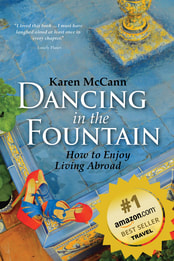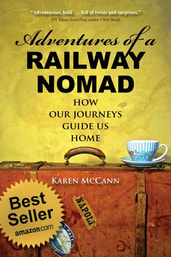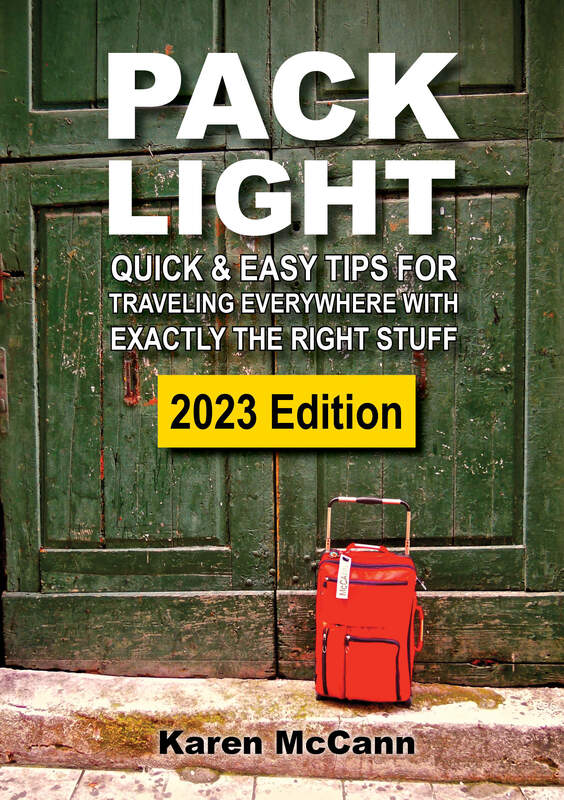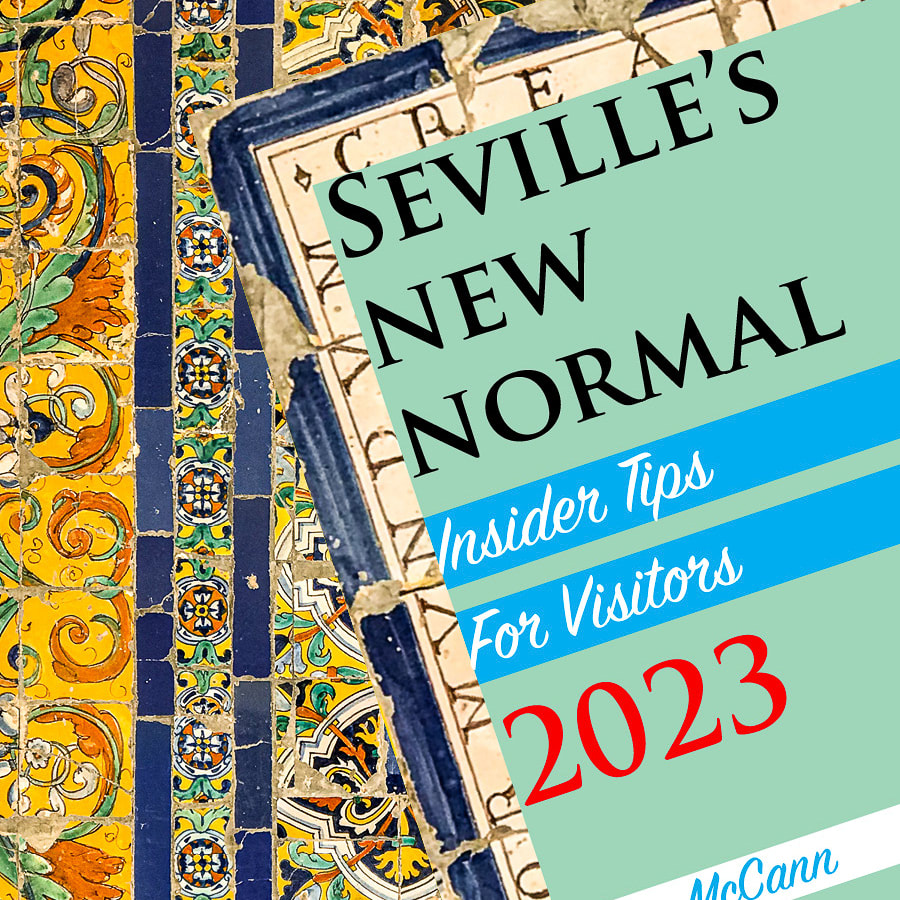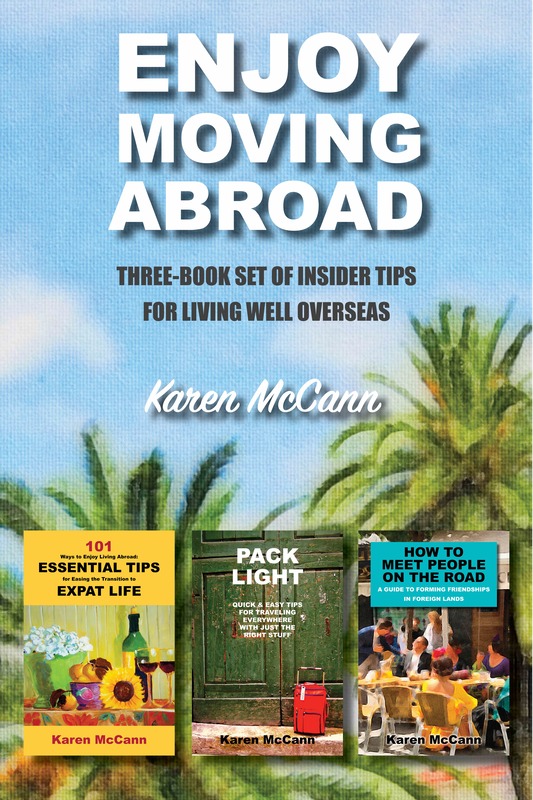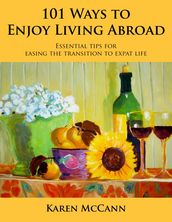|
For me, it will always be the fright night, the one where Rich and I scared the living daylights out of every child (and many adults) in our Ohio neighborhood. It was definitive proof that when you get into a vendetta with a six-year-old, chances are you’ll end up going way, way too far. It all started one Halloween when we fashioned a ghost out of an old bedsheet and hung it out the window, twitching it when trick-or-treaters approached our door. “That is so lame,” sneered one six-year-old. Rich bristled; I put on my thinking cap. After that, we upped the chill factor, going a notch higher every Halloween. The kid kept scoffing. And then, the year he turned eleven, we got him. Picture the scene. The kid swaggers up to our door and knocks. A headless figure with skeletal hands (me in a pair of Rich’s boots) opens the door and beckons him and his friends inside. In the candlelit entryway, scary music is playing, and there are cobwebs, bats, rats, spiders, and snakes everywhere. Saying nothing (after all, I’m headless) I point to the far end of the room, where we’ve placed the dining room table, draped in black. On it sits a large box labeled “Really Good Candy!” “That’s Rich in the headless costume,” the kid says scornfully as he slouches toward the table. “Like we’re impressed.” And then he lifts up the box and sees what's inside. We'd pulled the two halves of the table apart, and Rich's head, poking up through the gap, is made up like a ghoul, blood dripping from one corner of his mouth. The kid screams and leaps so high I am sure we'll have to scrape him off the ceiling. When his feet return to Earth, he runs shrieking out into the night. Word went around like lightning, and soon groups of trick-or-treaters were lining up on the lawn, waiting their turn to be terrified. That night we passed into neighborhood legend, establishing a benchmark for fear and horror that has stood for twenty years. Until now. “The only way we’re going to get through this October,” I remarked to Rich, “is to think of it as a month-long haunted house.” Because let’s face it, we all know that horrifying things are going to keep leaping out at us at every turn. Between the pandemic, run-up to the election, wildfires, looming economic collapse, civil unrest, and climate change, I blanch and tremble every time I glance at the headlines. Clearly the best we can hope for is to stagger into the first weeks of November gasping for breath, nerves shattered, stunned to find ourselves still among the living. They say in the future this year will become a catchphrase; we’ll say things like “How was my day? Beyond horrible. A total 2020.” To distract and entertain us as we soldier on, our local newspaper is holding a contest to see who can write the best six-word memoir of the pandemic. If you’re not familiar with the six-word-story genre, it is usually (probably inaccurately) attributed to pals betting Ernest Hemingway he couldn’t write a novel in six words. He allegedly scribbled this on the back of a napkin: For sale. Baby shoes. Never worn. Bet won! Whether or not that ever happened, countless other writers have stepped up to the challenge. It’s behind you! Hurry before it - Rockne S. O’Bannon Computer, did we bring batteries? Computer? - Eileen Gunn Machine. Unexpectedly, I’d invented a time - Alan Moore The baby’s blood type? Human, mostly. - Orson Scott Card T.H.C., L.S.D., D.U.I., C.P.R., D.O.A., R.I.P. —theporkfork “Male?” “It’s an older driver’s license.” —CraboTheBusmaster The New York Times recently challenged readers to write six-word memoirs about the pandemic. Eighth hour of YouTube. Send Help! — Leela Chandra Bad time for an open marriage. — Rachel Lehmann-Haupt Social distancing myself from the fridge. — Maria Leopoldo Cleaned Lysol container with Lysol wipe. — Alex Wasser Afraid of: snakes, heights, opening schools. — Michelle Wolff Numbers rise, but sun does too. — Paloma Lenz I wondered if I could come up with a six-word story that captures the essence of 2020. Here is my best effort; you be the judge. Aughhhh hhhhh hhhhh hhhhh hhhhh hhhhh!  Janet Leigh screamed her way through this famous shower scene in Psycho. After that, she said, “I stopped taking showers and I only take baths. And when I’m someplace where I can only take a shower, I make sure the doors and windows of the house are locked. I also leave the bathroom door open and shower curtain open. I’m always facing the door, watching, no matter where the shower head is.” Yes, there’s plenty of angst going around these days. And maybe that’s not all bad. Frank Herbert, author of Dune, once said, “People need hard times and oppression to develop psychic muscles.” If so, by now our collective mental brawn could rival young Arnold Schwarzenegger’s physique. I keep reading articles suggesting we reduce our stress with meditation, communing with nature, and switching to decaf. And that’s all excellent advice. But I’m taking a different approach: embracing the mood of the times and steeping myself in ghost tales and horror movies throughout the month. Because really, which is worse — reality or the Hollywood version? I’m already compiling a list, starting with oldies likeTopper and Abbot and Costello Meet the Mummy, progressing through such spine-tinglers as The Birds, Poltergeist, and The Sixth Sense, and finishing with Black Mirror and the reboot of The Twilight Zone. I’m strictly rationing the amount of news I absorb each day (twenty minutes max!), but I figure this programming will keep my mood in perfect sync with everyone else’s. Except I have the luxury of knowing I can fast forward through the worst parts or shut it off all together if it gets to be too much. When I was growing up, Halloween was about learning to brave the unknown and handle scary encounters with strangers dressed as monsters. Ohio neighbors told me that after the head-in-the-box year, their trick-or-treating kids walked up our long, dark driveway dizzy with fear and anticipation — and considered it the highlight of the night. But most kids won't get those kinds of thrills in 2020. CDC guidelines warn against activities such as trick-or-treating, haunted houses, costume parties, and hay rides. Instead, responsible parents are organizing small pumpkin-carving and cupcake-decorating parties. This year, we’ve already learned enough about handling scary moments. Once I came to grips with the idea this October was going to be a horrorfest, I actually grew more cheerful. I like to face things head on. When I was little, my mom went overboard trying to shield us kids from the harsher realities of life, and all too often I felt a worrying disconnect between what I observed and the prevailing narrative. I learned that “I’m delighted your grandmother is coming for a long visit. It’ll be fun!” was code for “Nightmare! Where’s the sherry?” We have plenty of fright nights (and days) ahead, but on the bright side, the year only has three more months to go. And the odds we'll survive October are pretty good — considerably higher, in fact, than those of the clueless teens in Friday the Thirteenth, anyone falling asleep during Invasion of the Body Snatchers, or customers of the Bates Motel. We are a very resilient species, and we live, learn, and grow through hard times. As a six-word memoir by a writer known as mcavanagh puts it: Fell nine times; got up ten. What six words reflect your 2020 experiences? What are you anticipating in the weeks ahead? How are you clinging to hope and sanity? Let me know in the comments below. YOU MIGHT ALSO ENJOY Stay tuned! More good news, survival tips, comfort food recipes, and fun stories are on the way.
Make sure you don't miss out; sign up below.
21 Comments
Forget the news, and the radio, and the blurred screen. This is the time of loaves and fishes. People are hungry and one good word is bread for a thousand. David Whyte Every day I wake up hoping for a miracle — a reliable vaccine, rain dousing the wildfires, a superhero arriving in the nick of time to save our bacon. I’m still waiting on the first two, but I was delighted to learn that Batman has surfaced (at last!) and is doing heroic things in Santiago, Chile. Wearing two masks — one shiny black with pointy ears, the other for coronavirus protection — the Caped Crusader prepares and delivers hot meals to the city’s homeless. And along with the empanadas and cazuela, he brings heartening words and a bit of lighthearted banter. “Look around you,” said the do-gooder, who asks that his real name not be revealed (as if everybody doesn’t know it’s Bruce Wayne). “See if you can dedicate a little time, a little food, a little shelter, a word sometimes of encouragement to those who need it.” Times of crisis bring out the best and worst in people. We’ve all watched, aghast, as supposedly sane adults throw hissy fits over masks and insist harebrained conspiracy theories are true because it says so on the Internet. But others, like Chile’s Batman, find in themselves unexpected wellsprings of kindness and compassion. Did you hear about three-year-old Mia Villa who has baked over 1,000 chocolate chip cookies for front-line and essential workers? Yes, her mom helps but says Mia was the inspiration for the Cookie Kindness project. Then there’s electrician John Kinney, who came to fix 72-year-old Gloria Scott’s broken overhead light and realized that the whole house needed help. “No lights, running water… I [saw] her on a Friday and it stuck with me over the weekend… I said, ‘I got to go back there.’” Kinney returned to make additional repairs, free of charge, then recruited more volunteers and eventually formed Gloria’s Gladiators to assist elderly neighbors in need. Sometimes the person we most need to help is ourselves. If you’re not feeling existential angst these days, you haven’t been paying attention. Every part of our lives has been turned upside down and inside out, leaving us reeling — and ready to hit the reset button. “We’re questioning the very fundamentals of the ‘normal’ we’d all come to unthinkingly accept — and realizing we don’t want to go back, not to that,” wrote Sigal Samuel in Vox. “Living in quarantine for months has offered some — mostly the privileged among us — a rare opportunity to reflect on our lives and, potentially, to reset them. Workers whose jobs defined their lives are now asking what all that productivity was for, and whether we really want to measure our self-worth by the yardstick of hypercompetitive capitalism. Many are finding that the things that made them look ‘successful’ actually also made them feel miserable, or precarious, or physically unwell.” 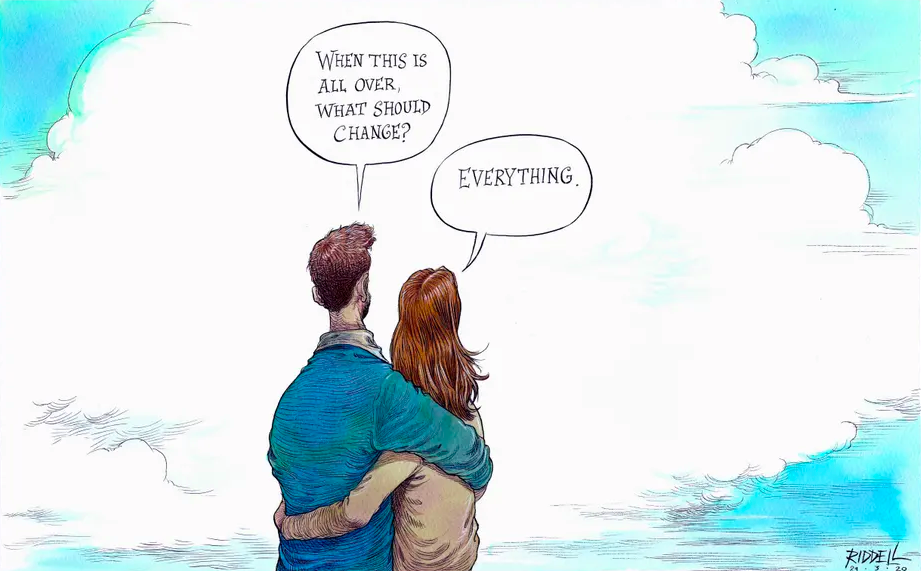 Illustration by Chris Riddell for The Guardian Illustration by Chris Riddell for The Guardian How can we change for the better? Here are eight quarantine-inspired habits Vox readers vow to keep.
Like New Year’s resolutions — 80% of which are abandoned by February — I expect many of these habits will disappear long before we put our masks away in the attic for good. But hey, if even one sticks, it’s a step in the right direction. Journeys of self-discovery aren’t always comfortable. In one survey 55% of respondents said they felt embarrassed about some of their pre-pandemic values. Take science, for instance. I don’t know about you, but I’ve read more about biology, medicine, chemistry, and epidemiology in the past six months than I ever did in high school, college, and my years as a magazine health writer. It’s amazing how having your life in danger sharpens your interest in data that could help you survive. Despite the best efforts of the lunatic fringe to discredit them, scientific experts are more respected than ever and viewed as more trustworthy than the media, business leaders, or elected officials (obviously a low, low bar). “COVID death tolls,” said Katharine Hayhoe, climate researcher at Texas Tech University, “provide feedback on a daily basis of what happens when you ignore science.” Maybe that’s why people are now paying more attention to climate change, too. About two thirds of Americans say that during quarantine they experienced transformative “eco wake-up calls” realizing they — and the government — must step up and protect the environment. People are re-configuring all their relationships, starting with their partners. Couples in their twenties report spending less time having sex and more time communicating — and they’re OK with that. “I feel like we’ve gone through 30 years of marriage in three months,” says Kate in New York. “But it’s definitely shown me the resilience behind the relationship. It’s like a challenge that I think we both wanted to step up for. So it’s definitely made us stronger.” In Texas, Layne voices a more basic benchmark. “It’s a real good test of a relationship that you can be stuck in the same place as someone for such an extended period of time and not want to rip each other's heads off.” Several recent studies have shown that the age group handling the pandemic most gracefully is older adults (my cohort). Despite constant reminders that we’ve got a COVID-19 target painted on our backs, those born before 1965 are coping better, in part because we’re juggling fewer work and family responsibilities, but also because we’ve learned how to survive catastrophic times. As columnist Helen Dennis put it, “We can reassure young people that this too shall pass.” And having grown up in the pre-digital age, we find it easier to live with less stimulation and more silence. Poet David Whyte says, “All of our great traditions, religious, contemplative and artistic, say that you must learn how to be alone — and have a relationship with silence. It is difficult, but it can start with just the tiniest quiet moment.” The universe has given us a big time out to consider our lives and figure out how to be the adults we hoped to become when we were kids and wondered how we’d turn out. What has surprised you most about the way life turned out? Let me know in the comments below. YOU MIGHT ALSO ENJOY Stay tuned! More good news, survival tips, comfort food recipes, and fun stories are on the way.
Make sure you don't miss them; sign up below. In a year as awash with bad luck as 2020, it’s tempting to wonder whether the fault lies in our stars; after all, Mercury was in retrograde in early March, which could hardly be a coincidence. Or is it divine retribution — the Biblical End Times we've heard so much about? Could the madness be caused by the machinations of reptilian extraterrestrials bent on global domination? I recently had the ghastly realization that it could actually be my fault. You see, in Spain you ensure good fortune for the coming year by doing two things on New Year’s Eve: 1) eating 12 grapes as the clock strikes midnight and 2) wearing red underwear. On December 31st, Rich and I were at the home of Spanish friends who provided the grapes, so we had that covered. But somehow, as I was dressing for the occasion, the red underwear completely slipped my mind. I was horrified when I realized my omission. “How could I have forgotten?” I wailed to Rich on the walk home. “Sure hope this doesn’t mean 2020 will be a dud.” It has been a tough year for a lot of us, including Boonrod, the dog found swimming 135 miles from land in the Gulf of Thailand. I’m guessing he fell off a passing trawler; eyewitnesses say the pup was exhausted and in deep distress by the time oil rig worker Vitisak Payalaw spotted him. When the crew hauled the dog out of the choppy water to safety, Payalaw said, “His eyes were so sad. He just kept looking up just like he wanted to say, ‘please help me.’” The crew named him Boonrod, which means “he has done good karma and that helps him to survive.” The dog was taken to a vet on the mainland, and when no owner could be found, Payalaw adopted him. “He is like a son to me,” he said, as Boonrod leaped joyfully into his arms. Dogs have been a great source of comfort to many during these difficult times. California fire fighters have an official pet therapy dog to play with during breaks. Kerith, whose previous job was cheering up mental patients, now spends her days boosting morale on the front lines of California’s rampaging wildfires. I don’t know if any of the fire fighters has joined this offbeat trend, but lately some adoring pet owners have been printing images of their dogs on face masks. In these photos, the humans seem far more amused than the canines. Is it me, or do these animals look embarrassed, as if they’re barely restraining eye-rolls and snorts? Spending more time at home has inspired many of us to pay more attention to the animals around us, and for some, such as Nasa engineer Mark Rober, interest borders on obsession. It all started when he put up a series of “squirrel-proof” bird feeders that were instantly breached by the clever, athletic squirrels in his Bay Area backyard. Rober decided to see how far the furry bandits would go, so he created the Squirrel Ninja Obstacle Course, now a viral YouTube video. The course includes the Bridge of Instability, the Maze of 1000 Corridors, the Pitchfork Tumblers of Treachery, the Homewrecker (a stuffed squirrel in a blond wig and bikini), the Slinky Bridge of Deception, and so on. Spoiler alert: the squirrels eventually made it to the bird feeder and the walnut jackpot. But it’s the journey, not the destination, that makes this one fun to watch. Yes, a lot of people have way too much time on their hands these days. And that’s especially true for seniors on COVID lockdown; most aren’t even allowed family visits. At Sydmar Lodge in North London, activities coordinator Robert Speker had the brilliant idea of photographing residents in recreations of famous rock album covers. “The need to keep them happy, entertained, and full of spirit has never been more crucial,” he said. “It’s been my job and privilege.” From David Bowie’s Ziggy Stardust on the Aladdin Sane album to the Clash to Blink-182’s Enema of the State, these grannies and grandpas show they’re still ready to strut their stuff in style. Challenging times spark creative thinking. And with concerns over disruptions in the voting process due to COVID and other factors, America’s basketball teams are turning their stadiums and practice facilities into Election Super Centers this November. The vast arenas offer better social distancing, more efficient crowd handling, and convenient public transportation. The majority of poll workers are over 60, the age group most vulnerable to COVID, and with many sensibly staying home, there will be serious shortfalls in staffing. Starbucks, Old Navy, Target, Microsoft, and other major companies have stepped up, paying their employees for the day if they serve as poll workers and encouraging their customers to volunteer as well. NBA superstar LeBron James, other athletes, state election officials, and the NAACP Legal Defense Fund launched More Than A Vote, a multimillion-dollar campaign to recruit poll workers to cover vulnerable neighborhoods of color and ensure sufficient equipment is available. Many workers lose pay, even risk jobs, to take time off to vote, especially in poorer neighborhoods where fewer poll workers mean hours-long lines. This year, 950 American companies have committed to giving employees time off to vote. It’s almost enough to restore your faith in humanity, isn’t it? And here’s yet more proof this is still (on a good day) a pretty wonderful world. When a Cleveland couple had to cancel their wedding reception due to the pandemic, they were offered a full refund on the catering, but decided instead to deliver the wedding feast to a City Mission shelter for women and children in crisis. As their first act as a married couple, Melanie and Tyler Tapajna, still in wedding finery, dished out food to a hundred residents. “This is actually, probably the best outcome of it all,” said the bride. This year we’ve all felt like Boonrod, adrift in a vast and terrifying ocean of woes, doing our best to keep paddling, even if there’s no solid ground anywhere in sight. What can we do to keep staying afloat? For a start, we can check in regularly with good news sources, which carry heartening stories about everyday people doing extraordinary things, like the Tapajnas, Boonrod's new dad, and the residents of Sydmar Lodge. Need more? Check out free online courses offered by major universities, such as the University of California, Berkeley’s The Science of Happiness, or Yale University’s The Science of Wellbeing, the most popular class ever taught in Yale’s three-century history. And finally, promise me that you will be wearing red underwear on New Year’s Eve and eating twelve grapes as the clock chimes midnight. Because as sure as we are that those are just silly superstitions, what if we're wrong? Do you really want to take a chance on having another year like 2020? Me neither! One more thing you can do to bring good news into your life: subscribe to this blog, so you never miss a single heartwarming story, survival tip, or comfort food recipe.
Who doesn’t love to roll their eyes over absurd conspiracy theories? I heard one this week that I’ll share, but only if you promise not to believe a word of it: they’re saying the wire that goes across the nose of your face mask is 5G (wireless technology that’s the subject of a boatload of debunked but persistent rumors). My friend Julie heard one that's equally idiotic: “Don’t let them take your temperature when you go into a store because they’re really going to take your brain.” How exactly does that work? And then there’s the classic blame-the-aliens. “According to Professor Chandra Wickramasinghe, of the Buckingham Centre for Astrobiology, Covid-19 arrived on earth via a fireball from space that burnt up in China last October.” Which brings us to the most astonishing thing about the modern crop of silly conspiracy theories: so far nobody has managed to find a link between coronavirus and the lizard-like, shapeshifting aliens known as reptilians. Last month I learned these visitors to our planet are (allegedly) breeding energetically with humans and have already taken over the British royal family, the Rothschilds, the Bushes, and the Merovingian dynasty — which fans of the DaVinci Code will remember are believed to be direct descendants of Jesus Christ and Mary Magdalene. I was staggered to learn this week that 12.5 million Americans are convinced reptilian aliens have infiltrated the US government. Which members of the government are lizard people seeking to rule the planet, you ask? Where else have these pesky reptiloids infiltrated? Your workplace? Your home? Could you be one? Are you sure? “Scientific evidence” suggests that you watch for these telltale signs, according to Alien Hub (and if you can’t trust a source like that…).
For those of us making a genuine effort to identify whoppers when we scroll past them online, there's the free, downloadable Conspiracy Theory Handbook . Co-authored by Stephan Lewandowsky of Bristol University in Australia and John Cook of George Mason University in Virginia, it offers practical tips like this for investigating suspect claims. Ask Yourself 1. Do I recognize the news organization that posted the story? 2. Does the information in the post seem believable? 3. Is the post written in a style that I expect from a professional news organization? 4. Is the post politically motivated? “Conspiracy theories,” note the authors, “allow people to cope with threatening events by focusing blame on a set of conspirators. People find it difficult to accept that ‘big’ events (e.g., the death of Princess Diana) can have an ordinary cause (driving while intoxicated). A conspiracy theory satisfies the need for a ‘big’ event to have a big cause, such as a conspiracy involving MI5 to assassinate Princess Diana.”  Not to worry; so far this is still a satire. Not to worry; so far this is still a satire. We’re in the middle of multiple big events right now, and you don’t have to be a reptilian psychic to pick up on the fact that we’re all feeling threatened, frightened, and powerless. Our nation’s current leaders have failed to act decisively to protect us from the coronavirus or climate change, and have sewed discord that is feeding public unrest and instability. Nowhere feels safe. Nobody is putting the brakes on the runaway train of 2020. It’s clear we are in a tight spot. I have no idea what will happen next, but whatever it is, we’re going to need all our reserves of common sense, honesty, truth, and clear thinking. Fantasy can be fun, but I probably don’t have to tell you how dangerous false stories and misinformation can become. A study of the first three months of 2020, published in the American Journal of Tropical Medicine and Hygiene, identifies 800 deaths and 5,800 hospitalizations due to false information found on social media, mostly involving drinking methanol or alcohol-based cleaning products in the mistaken belief they could prevent or cure Covid-19. Other “remedies” included cow urine, extreme vitamins, and massive amounts of garlic — none of which proved beneficial (except perhaps for warding off vampires). When the big picture starts to get me down, I focus on the little stuff. “Celebrating the small moments in life is critical when it comes to navigating stressful times,” noted Katie Cline, marketing VP at Bubbies Ice Cream, which recently sponsored a poll asking people to define their top “little joys,” such as being reunited after an absence. The Little Joys of Summer 2020 1. Seeing a loved one after being apart for a while 2. Sleeping in a freshly made bed 3. Feeling the sun on my face 4. Getting something for free 5. Having time to myself 6. Hugging a loved one 7. Finding money I didn’t know I had 8. The first sip of coffee in the morning 9. The clean feeling after a shower 10. Receiving an “I’ve been thinking about you” type text These may be modest delights, but connecting solidly with even one of them can boost our sense of wellbeing and help us feel more grounded in our day and hopeful about life. Another article I read offered such reasonable suggestions as “keep things in perspective … focus on things you can control … unplug.” I was a bit startled by the final bit of advice: a free stress-reduction hypnotherapy program offered by Amazon Alexa and Google Assistant. Maybe it was all the time I’d just spent reading about paranoia run amok, but I have to admit, the idea of being hypnotized by a machine gave me pause. My mind replayed scenes from a dozen sci fi movies in which robots took over an Earthling’s consciousness; it never ended well. Just because you’re paranoid doesn’t mean they aren’t out to eat your brains and make unspeakable alterations to your body. Or as one meme puts it, “Three conspiracy theorists walk into a bar. Now you can’t tell me that’s a coincidence.” Thanks for keeping me company on the hair-raising journey through 2020. I publish weekly, sharing my best survival tips, loony stories, and comfort food recipes. If you'd like to be alerted when more stuff comes out, just send me your email address. And stay strong, my friends. This thing is far from over.
|
This blog is a promotion-free zone.
As my regular readers know, I never get free or discounted goods or services for mentioning anything on this blog (or anywhere else). I only write about things I find interesting and/or useful. I'm an American travel writer living in California and Seville, Spain. I travel the world seeking eccentric people, quirky places, and outrageously delicious food so I can have the fun of writing about them here.
My current project is OUT TO LUNCH IN SAN FRANCISCO. Don't miss out! SIGN UP HERE to be notified when I publish new posts. Planning a trip?
Use the search box below to find out about other places I've written about. Winner of the 2023 Firebird Book Award for Travel
#1 Amazon Bestseller in Tourist Destinations, Travel Tips, Gastronomy Essays, and Senior Travel
BLOG ARCHIVES
July 2024
CATEGORIES
All
|
